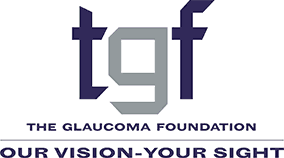~Doctor, I Have a Question. My glaucoma doctor uses different imaging devices during my eye exams. What does each of them do?~
Question answered by:

Your eye doctor has a range of sophisticated tools to help diagnose glaucoma and measure its progression. Since optic nerve damage cannot be reversed, detecting glaucoma and its progression as early as possible is key to keeping glaucoma under control and preserving sight.
The optic nerve is composed of over one million individual nerve fibers. By imaging your optic nerve over time during multiple visits to your eye doctor, these machines can help monitor and detect the loss of optic nerve fibers.
Your eye doctor may be using one of these optic nerve computer imaging techniques as part of your glaucoma examination: GDx Analyzer (short for Glaucoma Diagnosis Analyzer), Heidelberg Retinal Tomography (HRT), and Optical Coherence Tomography (OCT).
The Nerve Fiber Analyzer (GDx) uses laser light to measure the thickness of the nerve fiber layer. When thinning, this layer gives important clues to physicians about the presence of glaucoma.
The Heidelberg Retina Tomograph (HRT) is a special laser that produces a three-dimensional high-resolution image of the optic nerve. This test provides clinicians with measurements of nerve fiber damage (or loss).
Optical Coherence Tomography (OCT) is currently the most popular technology used by glaucoma specialists for optic nerve fiber analysis. OCT measures the reflection of laser light much like an ultrasound measures the reflection of sound. It can directly measure the thickness of the nerve fiber layer and create a three-dimensional representation.
Research has shown that damage to the nerve fiber layer and optic nerve often occurs before visual field changes are recognized. After glaucoma is diagnosed, scans taken over time may show progression of the disease and whether your treatment is working.
For the OCT test, you sit in front of the OCT machine and rest your head on a support to position your head correctly. You will be asked to look at a blinking target and the scans will be taken without the machine touching your eye.
OCT is also used for imaging before cataract surgery to detect diseases like macular degeneration that might limit the success of cataract surgery in glaucomatous and non-glaucomatous patients.
OCT technology, first introduced in 1991, continues to advance. AI may pave the road for cost-effective glaucoma screening programs, such as detecting glaucoma from OCT images in an automated fashion.
